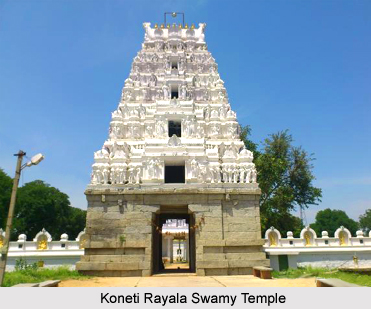 Koneti Rayala Swamy Temple also known as Venkateswara Temple is located in the village of Keelapatla in the Indian state of Andhra Pradesh. The presiding deity of the temple is Lord Venkateswara. The temple was built under the patronage of Pallava kings in the ninth and tenth centuries.
Koneti Rayala Swamy Temple also known as Venkateswara Temple is located in the village of Keelapatla in the Indian state of Andhra Pradesh. The presiding deity of the temple is Lord Venkateswara. The temple was built under the patronage of Pallava kings in the ninth and tenth centuries.
Lord Venkateswara at Keelapatla is believed to be a Kalpatharu i.e. a divine tree that bestows boon to the worshippers. It is also said that it is Chintamani, a celestial power and Kamadhenu, the heavenly cow. The sanctum of the temple houses Koneti Rayadu like Tirumala Devar. He is seen standing with `Sankhu Chakras`, `Kati Varada Hastas.` his chest bears the impression of Sridevi and Bhoodevi. Koneti Rayala Swamy Temple has been decorated with ancient Chennakesava idol standing with his two wives. Statues of Bhoovaraha Moorthy, Jaya-Vijaya, five Alwars, Anjaneya Swamy, Garudalwar have also been erected to adorn the beauty of the temple.
This article is a stub. You can enrich by adding more information to it. Send your Write Up to content@indianetzone.com





















